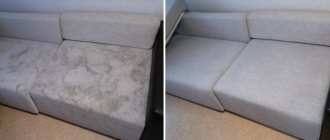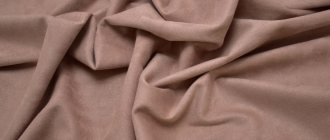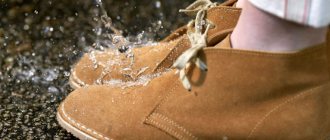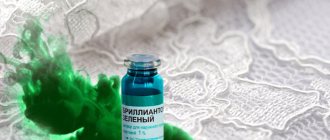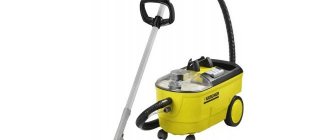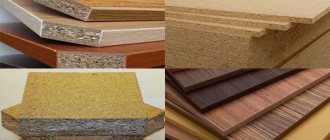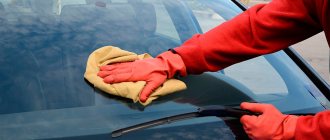Artificial suede is a beautiful and practical material, which in its characteristics is actually not inferior to natural one, but is much cheaper. This combination of practicality and aesthetics is what made eco suede popular. Shoes, clothing, car interior trim, furniture, interior items and accessories - wherever soft and so pleasant to the touch suede is used. Its undoubted advantage is the ease of care and cleaning, and careful handling of things will preserve their original appearance for as long as possible.
Specific features of faux suede
Natural suede was originally made from chamois skins, later furriers switched to sheep, goat, deer, and pig skins.
Fabric belonging to the new generation is produced using two methods:
- Woven samples consist of microfiber, whose threads are divided into small fibers that differ in frequency and height. After certain processing, this pile blank is glued to the cotton base. Elasticity is achieved by applying a special composition. This kind of material is practical, elegant and is used for sewing jackets, raincoats, coats, and sheepskin coats.
- Non-woven raw materials are made from polyester pile on a silk, synthetic or knitted base. This is a less expensive method of production, the product is rougher, but durable and undemanding.
Both types are characterized by a fleecy front surface and look presentable. According to the weaving structure, it is a simple, complex, coarse-grained or fine-grained fabric, which is comfortable to the touch, having a spectacular iridescence and velvety feel.
Teflon impregnation promises products a water-repellent and dirt-repellent protective effect.
Cleaning brush
When studying the technology of how to care for suede shoes yourself at home, you need to pay attention to the acceptable brush options. To clean lint leather after the first walk, you will need to purchase a special porous material. This sponge brush has high rigidity.
It is used in combination with a special foam cleaner. This will allow you to quickly remove the top layer of dust in dry weather.
To remove greasy deposits, you should get a special eraser or a brush with rubberized teeth. You may also need a crepe cleaner. After its use, the surface becomes velvety. For convenience, small brushes are available for sale that combine the two types of cleaners presented above.
For deep cleaning, use a special flannel brush with coarse bristles.
Types of faux suede
There is also electrostatic suede, self-adhesive Alcantara, stretch knit, two-layer Scuba and Dulbfas - a double-sided fabric option.
Matte, glossy or fur-lined variations with a variety of colors, textures and patterns do not hold back the flight of designers’ imagination. They can resemble reptile skin or tree bark without cracking or peeling.
To wash or not to wash - that is the question.
Natural suede cannot be directly “washed” in a machine, in a basin or under running water. It can only be dry cleaned. Faux suede is less fussy and some people put it in the washing machine. If you are one of those who are not afraid, read about it in the article about delicate washing. There are instructions for delicate mode. Cleaning suede items is the same for jackets, shoes and hats. Follow the tips and there will be no dirty spots left.
First, wipe the sole with a clean, damp cotton cloth, removing all sand and lumps of dirt. Try not to touch the fleecy top with this napkin to avoid staining it. Suede does not tolerate hot water, so when cleaning nubuck, suede jackets or berets, use warm water no higher than 40 °C.
Areas of application of artificial suede
At first, ecosuede was only used to upholster furniture and decorate the interior, but with the development of new technologies and as a result of improved quality, the fabric is actively used in the sewing business.
It is used to make curtains, stylish men's and women's clothing: dresses, skirts, trousers, vests, etc. The shoe industry produces beautiful models of sports sneakers, elegant shoes, and boots.
Haberdashery products are presented:
- Gloves;
- Bags and backpacks;
- Belts;
- Wallet and other accessories.
Suede upholstery suits any interior style from classic to avant-garde. It is in demand on chairs, armchairs, sofas not only in apartments, but also in offices because of the respectability of furniture groups that look noble and aristocratic.
Increased rigidity indicates lamination by hot gluing of polyester and a cotton backing. In this case, there will be no folds, bubbles or stretching on the coating, maintaining an ideal configuration; such samples are more suitable for office furniture.
Thrifty car owners successfully decorate car interiors with artificial suede, and the produced velor wipes, which absorb moisture, are used for glass washing and polishing work.
Method 2. Clean the item locally
If, before washing your suede jacket, you find a prohibiting sign on its label, you can clean it locally. Wash contaminated areas using available products.
I know excellent ways to wash suede gloves, a dress, a shirt, etc. using improvised means:
| Method 1. Vodka (ethyl, isopropyl alcohol) Alcohol dissolves fatty contaminants:
This method can also clean a shiny jacket, shirt or bag. | |
| Method 2. Ammonia and vinegar These potent compounds are also good at removing grease and oil stains:
Vinegar not only cleans suede, but also helps make it soft. | |
| Method 3. Laundry soap Removes both fresh and old dirt:
|
Pros and cons of faux suede
Synthetic raw materials have surpassed their natural “sister” in many qualities, standing out favorably:
- Aesthetic appearance.
- At a democratic price.
- Wear resistance.
- Tactile pleasure.
- Resistant to dirt, dust, liquids.
- A rich range of colors, including all basic colors.
- Maintains shape without stretching.
- Low hygroscopicity.
- Uniformity of color.
The material does not wrinkle, does not electrify, is resistant to kinks and abrasions, does not shrink or fade from ultraviolet radiation, and is breathable. It keeps you warm in winter and keeps you cool in hot summers.
What can happen to leatherette furniture?
1. The edges of the back, hangers, and seats are rubbed.
2. The leatherette is wiped on the seat.
3. The material bursts, the seams on it come apart, which causes holes.
4. The shade of worn eco-leather changes or the material fades.
5. Leatherette becomes thinner and softer. Because of this, it peels off from the base and sticks.
6. The material becomes covered with stains that are difficult to remove.
If you do not take care of substitute furniture, the average period of its attractive appearance will be 2-3 years. And it is not the quality of the upholstery that is to blame, but improper care. With proper care, eco-leather furniture will last at least 7, or even 10 years.
Short pile is most durable
But there are also disadvantages: the fabric, especially light-colored ones, gets dirty quickly and, like a magnet, attracts pet hair, so for long-term use a removable cover is required. Z
- Amshes also suffer from mechanical stress; irreparable damage will be caused by the claws of cats or dogs.
- Regular care and careful handling of products is necessary, and in case of severe contamination, only dry cleaning will save you.
Required Tools
Processing suede requires special tools, since the fleecy material requires special care. It is better to purchase accessories in a specialized store, giving preference to expensive well-known brands, so there will be less risk of damaging delicate suede, while ensuring high-quality cleaning.
See also
TOP 17 methods for quickly bleaching yellowed plastic at home
Hard brush
Regular shoe or clothing brushes are not very suitable for suede; they can crush the pile, depriving it of its shine. It is better to purchase special brushes that combine hard bristles with metal fibers.
It is convenient to have at your disposal double-sided brushes made from various materials, which make it possible to remove dirt from hard-to-reach places, brush away dust and even out the pile.
Eraser
It is recommended to process velvety material using special erasers for suede shoes, which are sold in shoe stores. The device allows you to remove different types of dirt and lift the pile. In case of urgent need, you can use a regular office eraser, but for constant use you need to have at your disposal a tool specially designed for shoes.
Crepe brush
The tool is intended for cleaning and lifting the pile of suede shoes. For use only on pre-dried suede. Typically, such brushes combine natural bristles, metal “bristles” and rubber inserts made in the form of a labyrinth. Each detail is used depending on the material from which the shoes are made, its condition and the degree of contamination.
How is it different from real suede?
While being as similar as possible to its artificial counterpart, natural suede has a more natural look with a heterogeneous porous texture covered with cracks and scratches.
It is not monochromatic in color, it exudes the smell of leather, and the edges change thickness, becoming thinner. If you rub it with your palm, there is a noticeable lightening in the areas touched. On the fold, recovery occurs quickly, unlike imitation, which, by the way, does not absorb water compared to its expensive “relative”.
Rules for washing suede fabric
In order not to damage the structure of the material, it is worth choosing a gentle care regimen. This applies to the temperature of the water, the household chemicals used, and the fabric cleaning technology itself.
Faux suede
The optimal solution would be to completely stop washing clothes made from artificial material. Often, under the influence of moisture, a thing loses color and shape. In addition, washing may cause loss of softness or result in shiny areas. It is best to wash the faux suede with a small amount of soapy water directly in the dirty areas. If it is not possible to clean the item in this way, you can soak it briefly in warm soapy water and then clean it with a soft brush. Afterwards, clothes should be rinsed, but not wrung out.
Natural suede
For natural material, it is better to do without powder and choose liquid products. It is strictly forbidden to use bleach and aggressive stain removers. Washing suede is done in warm, but not hot water. Exposure to high temperatures can cause clothing to shrink. It is forbidden to rub the material vigorously to avoid the appearance of shiny streaks. Natural fabric is also not squeezed out, but left to drain.
How to care for faux suede
The material is contraindicated for wet cleaning, and therefore machine washing is justified as a last resort. At the same time, it is not recommended to combine it with other, and especially multi-colored, underwear.
Do not exceed the temperature of +40 degrees and the temporary hourly mode. Bleaching and aggressive components in washing gels are unacceptable.
Teflon-impregnated clothing can be washed after reading the manufacturer's instructions on the label.
Dry items by hanging them on a hanger or drying board, constantly shaking and straightening them to return to their original shape.
- To finish drying, brush the surface with a brush, following the direction of the pile.
- To maintain cleanliness, cleaning with a dry brush and vacuum cleaner is necessary.
- It is not advisable to iron the material; if necessary, do it from the inside out through a cloth flap.
Store the products in a ventilated place, placed in a case, without close contact with other things.
Lining
If possible, carefully peel back the lining and wash it separately in the machine or by hand. After drying, sew back. Another variant:
- Lift the lining with your fingers and wrap the suede in a plastic bag.
- Wet the lining so that moisture does not get on the suede.
- Lather the stains with laundry soap and scrub.
- Rinse off under running water or shower.
- Wring out and absorb excess moisture with a towel.
- Dry the jacket with the washed lining inside out. Hang on a hanger away from heating devices.
We suggest you read How to remove an oil stain from clothes: effective home methods
Cleaning Stains on Faux Suede
Dirt is removed piece by piece with a warm soapy solution. Fat is eliminated by talc or starch paste, lipstick is removed by alcohol.
- It is not forbidden to use ammonia, a school eraser to destroy random marks, and sprinkle tea marks with soda.
- The mark from a ballpoint pen is removed with fine-grained sandpaper or a piece of tape glued to the smudge and sharply torn off.
- The attractive appearance is restored by combing the glossy areas along the fibers, and the crushed areas are steamed.
The unique leatherette, although capricious, retains its original appearance for a long time with proper care.
It is pleasant to wear, allowing the body to breathe, and in furniture decoration it is an exclusive decoration of the environment. Treat it with caring love, and it will serve you faithfully for many years.
How to dry suede shoes, including nubuck ones + life hacks.
What not to do:
Dry shoes on a hot radiator, in an oven, with a hairdryer, under the direct influence of a heat gun and using any other aggressive heat sources. This can warp, crack, and roughen your boots or UGG boots.
But take this into account:
- Electric shoe dryers will gently and gently dry your favorite suede Timberlands. That's what they were created for)
To make suede shoes or boots dry faster , you need to immediately remove as much moisture as possible. Use old grandma's methods:
- Place rice or salt and tuck it into your shoes. As you know, these are excellent absorbents, and even a “drowned” cell phone comes to life after a couple of days spent in a box with ordinary rice. It will be more effective if you preheat the salt or rice in a frying pan or oven.
- White or craft paper perfectly absorbs moisture . Do not take newspapers, written or colored paper. All this paint, ink, can go straight into your suede UGG boots.
- By the way, a new product and life hack is silica gel . Small bags, as a rule, come with branded shoes, but this is not enough. Silica gel is sold in flower shops - it is used instead of soil for flowers, and also in pet stores - as cat litter . The steps are the same - in the sock and in the shoe. No need to warm it up. This is not a food product, and it is not known how it reacts to temperature. As soon as moisture is absorbed from the shoes into the material used, replace it with dry material.
|
|
- If you have a washing vacuum cleaner , use it. Insert the tube without an attachment into your shoes for half an hour. It will “suck out” all the phlegm. If you have a regular one, it’s better not to take risks: you don’t know what’s inside it that can short-circuit the water.
Article on the topic: How to weave furniture from newspaper tubes
Photo of faux suede
Some features of courtship
The general rules for caring for suede boots, boots, shoes and sandals are the same: each time after use, cleaning, drying, and treatment with protective agents is necessary. The nuances vary depending on the season and type of shoe.
in winter
In winter, it is especially important to treat boots with a water-repellent agent, which will protect the delicate material from wet snow, dirt, and road chemicals. New shoes are coated three times, then applied in advance before each trip outside. After use, the shoes are dried away from radiators, cleaned and the pile straightened.
Artificial material
For artificial, as well as for natural suede, it is imperative to use water-repellent agents before going outside. After returning, the shoes are dried away from the battery and cleaned with a brush. Even if there is no visible dirt, the bristles will raise the pile and give the shoes a neat look.
Shoes
The shoes that are worn in the summer, and most often these are shoes and sandals, suffer the most from dust. Every time after going outside, shoes should be cleaned by brushing off the dust with a soft cloth. After drying the shoes naturally, they are cleaned with a brush, the pile is lifted and treated with a protective agent.
Boots
To extend the life of suede boots, you need to pay attention to cleaning and drying the shoes after each use. Moisture from inside the boot can be removed using crumpled paper; this will also prevent deformation when drying.
